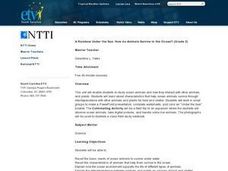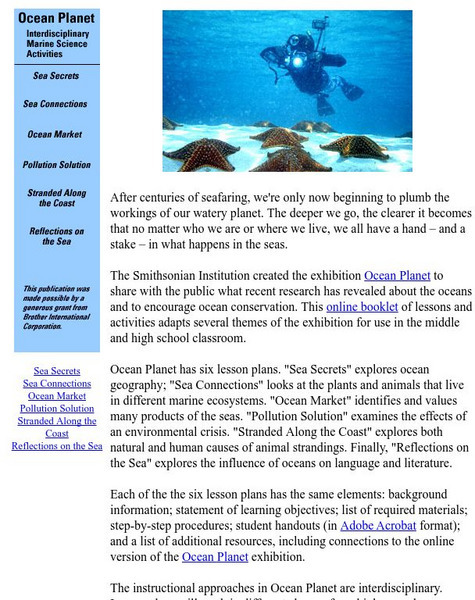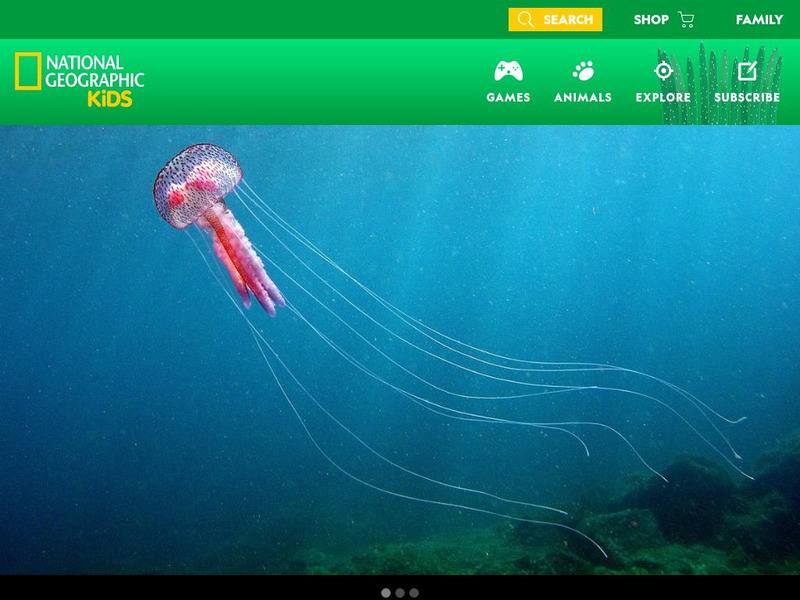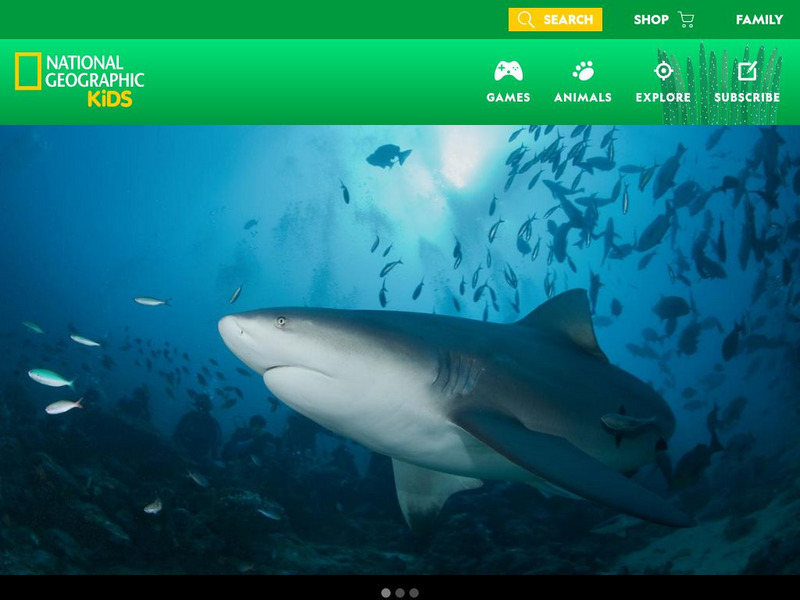Curated OER
A Rainbow Under the Sea: How do Animals Survive in the Ocean?
Second graders read books, watch videos, complete worksheets and participate in class discussions about ocean animals. They, in groups, design PowerPoint presentations on selected marine animals.
Curated OER
What Ocean Animals Do Worksheet
For this ocean animals worksheet, students draw lines to match pictures of ocean animals to their descriptions, 6 total. A website reference for additional resources is given.
Curated OER
Ocean Letter Match
For this beginning sounds worksheet, students study the pictures of the ocean animals and the letters. Students then draw a line from each picture to the letter with the same beginning sound.
Curated OER
Ocean Animals Alphabetical Order
In this alphabetical order worksheet, students arrange 8 names of ocean animals in alphabetical order. No two words will begin with the same letter. Note: Each word begins with a capital letter even though they are common nouns.
Curated OER
Ocean Animals Picture Matching Worksheet
In this picture matching worksheet, students draw lines to match 6 color pictures of common ocean animals to their identical copies in another column.
Curated OER
Ocean Word and Picture Matching
Students draw a line from 6 ocean animal names to their matching ocean life pictures on the right of the instructional activity. This matching instructional activity allows young students to work on an important visual skill.
Curated OER
Discovering the Deep
Students explore the world's oceans. They research questions about the oceans and write a research report about an ocean animal. Students identify at least four different writing genres they experienced while reading about the ocean.
Curated OER
Oceanography Research
Fifth graders locate information on a specific ocean animal using encyclopedias, nonfiction books, SIRS Discoverer, multimedia encyclopedias, and the Internet. They create an acrostic poem about the ocean animal they have been researching.
Curated OER
A Rainbow Under the Sea: How Do Animals Survive in the Ocean?
Second graders, with adult help, create a PowerPoint presentation on a selected ocean animal.
Curated OER
Organize Ocean Animal Research
Sixth graders research a variety of ocean animals, organizing the facts in the form of a database. They input the results of the research into the appropriate field of their database for their Oceanography Science Unit.
Curated OER
Those Amazing Seaworld Animals
Students research the animals at SeaWorld and then relate the info they have found into various types of graphs; line, circle and bar. This lesson plan combines math and science nicely. They access a website imbedded in this plan to do...
Curated OER
Brine Shrimp
Students gain a sense of the delicacy and complexity of a living organism and the rather narrow range of conditions under which it can live.
NOAA
Noaa: The Ocean Drugstore [Pdf]
Learn how organisms living in the oceans may help people cure diseases. Create a poster to display what you learn.
American Geosciences Institute
American Geosciences Institute: Oceans
Seven hands-on lessons module in which students explore oceans. Inquiry-based investigations include properties of seawater, ocean water and currents, and features of the ocean floor.
Missouri Botanical Garden
Missouri Botanical Garden: What's It Like Where You Live? (Oceans)
This site contains a wealth of information. You can click on shorelines, temperate oceans and tropical oceans. Each page contains links to even more information.
Smithsonian Institution
Smithsonian: Ocean Planet: Interdisciplinary Marine Science Activities
Smithsonian Institution presents ?Ocean Planet: Interdisciplinary Marine Science Activities?. Through this series of six interdisciplinary lessons, students will look at such things as the organisms in different marine ecosystems, the...
Society for Science and the Public
Science News for Students: Ocean Animals Have Mushroomed in Size
Article reports on the increasing size of ocean animals over the millenia. Includes a list of key vocabulary.
SEDL
Oceans [Pdf]
This large PDF file integrates math, science, and language into several lessons about characteristics of the oceans. Topics include ocean currents, tides, density, marine life, and pollution.
Georgia Department of Education
Ga Virtual Learning: Marine Vertebrates
Learn about vertebrates found in the ocean, their individual methods of adaptations, identifying characteristics and contributions to the marine ecosystem.
Smithsonian Institution
National Museum of Natural History: Ocean Planet
Detailed website that was a companion to a 1995 traveling exhibit of the Smithsonian. Links to lesson plans and other educational materials are at the bottom of the page. Enter the exhibition to explore the world of the ocean.
NOAA
Noaa: Living Ocean Gallery Invertebrates
Many still photographs and video clips of marine invertebrates are available in this huge collection.
National Geographic Kids
National Geographic Kids: Animals: Jellyfish
Take an exciting look at the jellyfish! Easy to read facts including habitat, physical appearance, movement, diet, enemies, as well as colorful photos. Click on the menu tab to view a video clip of this floating creature.
National Geographic Kids
National Geographic Kids: Animals: Bull Sharks
National Geographic site engages users with colorful photos and extensive facts about Bull Sharks. Be sure to click on the video link to view a short clip on these fascinating animals.
American Museum of Natural History
American Museum of Natural History: Milstein Hall of Ocean Life
Tour the museum's famed exhibition hall dedicated to ocean life at this online recreation. Find videos, maps, species specimens, and images that let you experience many of the museum's resources on ocean life right from your desktop.














![Noaa: The Ocean Drugstore [Pdf] Activity Noaa: The Ocean Drugstore [Pdf] Activity](https://d15y2dacu3jp90.cloudfront.net/images/attachment_defaults/resource/large/FPO-knovation.png)








